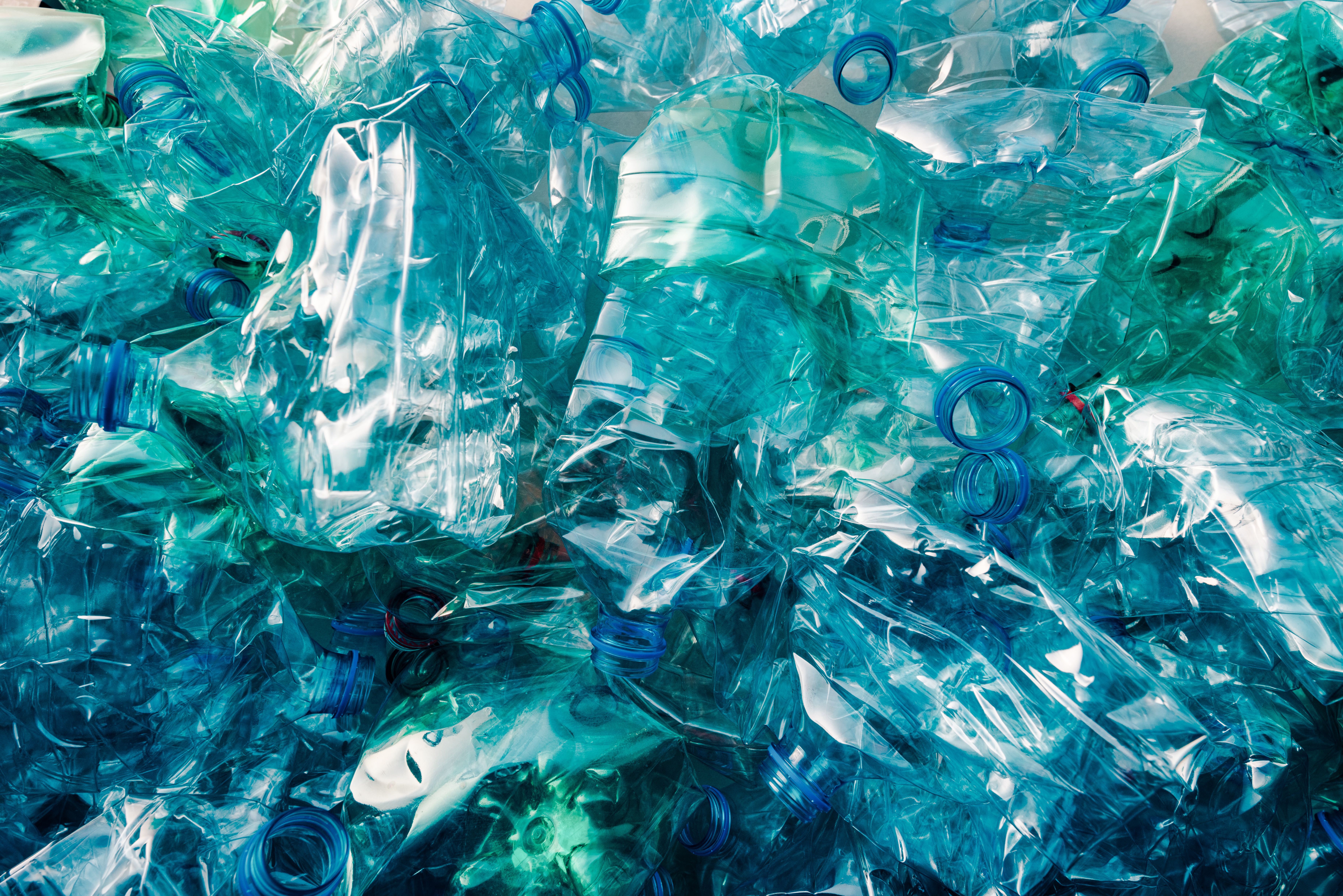Laser Technology Improves Detection of Heavy Metals in Recycled Plastics
A recent study explains how laser-induced breakdown spectroscopy (LIBS) is better suited for rapidly quantifying heavy metals in plastics than traditional methods such as inductively couple plasma–mass spectrometry (ICP-MS) and atomic absorption spectroscopy (AAS).
In a recent study published in the journal Spectrochimica Acta Part B: Atomic Spectroscopy, researchers from Brno University of Technology and analytical instrument manufacturer Lightigo S.R.O. proposed a new method for preparing calibration samples from consumer waste polymer materials using laser-induced breakdown spectroscopy (LIBS) (1). This method is designed to be an alternative solution for real-time monitoring of heavy metals in plastics.
Crushed plastic bottles heap | Image Credit: © Bits and Splits - stock.adobe.com

Currently, leading scientists and researchers are focused on developing new environmentally friendly technologies and uncovering innovative ways to reduce toxic materials entering the environment (1). The production of plastic, for example, adds toxic chemicals into the environment and government agencies are keen to regulate their use. However, there needs to be an effective way to monitor how much these toxic materials, such as lead, are being used in plastic products. By using LIBS, the research team developed a way to rapidly quantify heavy metals, especially lead, in post-consumer recycled polymer materials (1).
Using LIBS was essential in this study because it allowed the researchers to quantify heavy metals in plastics more quickly than traditional methods. Techniques such as inductively coupled plasma–mass spectrometry (ICP-MS) and atomic absorption spectroscopy (AAS) were used more regularly in the past, but these techniques have two distinct disadvantages: they are time-consuming to apply, and they are also susceptible to destroying the sample that they are being used to analyze (1).
Using LIBS helps rectify both concerns. The technique utilizes high-energy lasers to vaporize a small portion of the sample's surface, generating a plasma that emits characteristic light wavelengths when interacting with elements (1). Then, the emitted light is analyzed to determine the elemental composition of the sample (1). As a result, using LIBS offers significant time savings, with each analysis taking around 10 minutes, a stark contrast to the days required by traditional methods (1).
The researchers created specialized calibration standards and implemented LIBS for in situ monitoring of lead content in polymer post-consumer recycled materials. The technique demonstrated accuracy and precision, achieving over 90% accuracy and more than 86% relative precision for the quantification of lead content in standard samples (1). This level of precision holds immense promise for complying with European Union laws that specify lead limits in PVC polymer materials (1).
The successful integration of LIBS into heavy metal content analysis paves the way for its widespread implementation across industries. The environmentally conscious approach not only accelerates the analytical process but also contributes to reducing the ecological impact of plastic production (1).
As researchers continue to explore new avenues for sustainable practices, LIBS-based methodologies offer analysts another way to detect heavy metals in plastics, which contribute towards current environmental sustainability efforts.
Reference
(1) Holub, D.; Buday, J.; Porizka, P.; Kaiser, J. Determination of Pb content in recycled plastic debris by laser-induced breakdown spectroscopy. Spectrochimica Acta Part B: At. Spectrosc. 2023, 207, 106752. DOI: 10.1016/j.sab.2023.106752
Laser Ablation Molecular Isotopic Spectrometry: A New Dimension of LIBS
July 5th 2012Part of a new podcast series presented in collaboration with the Federation of Analytical Chemistry and Spectroscopy Societies (FACSS), in connection with SciX 2012 — the Great Scientific Exchange, the North American conference (39th Annual) of FACSS.